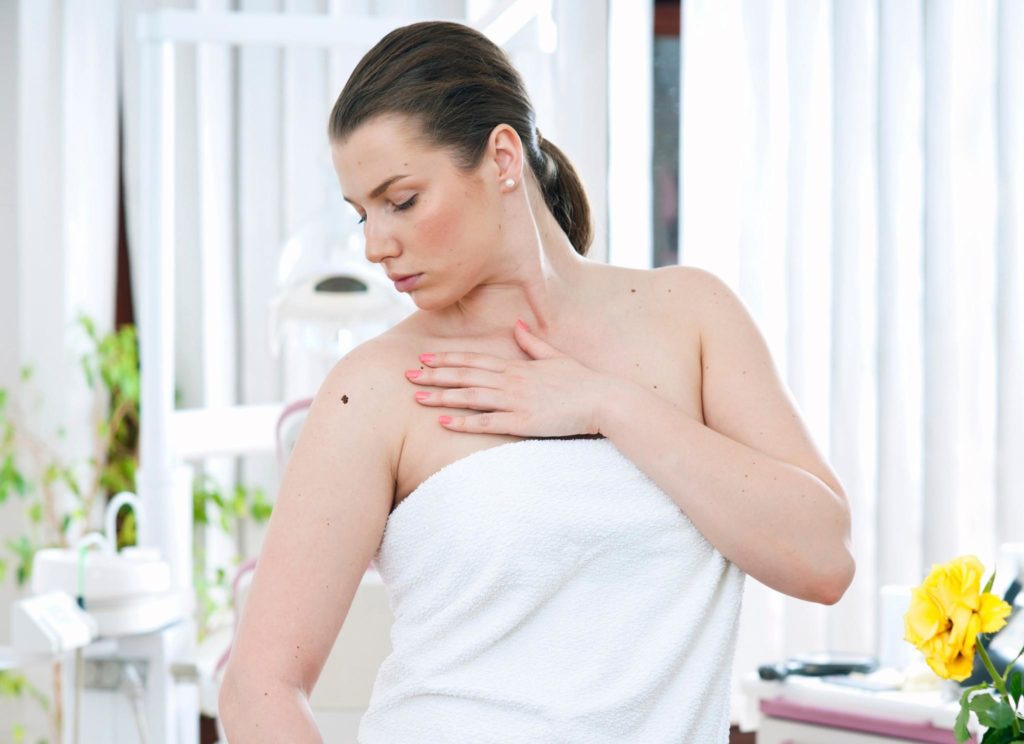According to the Irish Cancer Society, skin cancer is the most common cancer in Ireland, with just over 10,000 cases diagnosed here in 2013. Given that most cases are caused by over- exposure to UV rays, it is very possible to take preventive matters to help reduce the risk for you and your loved ones of developing the disease.

If you have a typical pale Irish or Caucasian complexion, you are probably more prone to developing skin cancer. Even more so if you have red hair and freckles. Put simply, this is because of a lack of melanin in your skin. Melanin is the pigment that gives your skin its colour and offers protection from the sun’s UV rays so paler skin types are more at risk.
Our climate is also a factor in the high rates of skin cancer here, with many cases of melanoma, squamous cell carcinoma (SCC) and basal cell carcinoma (BCC) seen in my work at the Blackrock Clinic in Dublin. We tend to think of UV and sun exposure in relation to hot, sunny weather. While many of us are good at applying SPF in warm weather or while we are abroad on holidays, the sun’s harmful UV rays are in fact impacting on our skin all year round – and even in overcast Irish weather.
Protecting your skin from UV rays is essential for skin health and to reduce the risk of skin cancer. Use a high factor, broad spectrum SPF every day, particularly from May to September and never use sunbeds.
Along with being sunsmart, being aware of your body – moles in particular – and performing self- checks regularly can help identify any areas of concern.
Make sure you know what your skin looks like and what is normal for you. Melanomas can occur in parts of your skin that don’t see the sun, so you need to be thorough - don’t just check immediately visible places.

Asymmetry – normal moles and freckles are usually symmetrical. Look for asymmetry, or the two halves of the area differing in shape.
Border – look for an irregular or blurred border on the mole, rather than a smooth, defined edge.
There may also be notches too.
Colour – check for uneven colour, or shades of black, brown and pink.
Diameter - melanomas tend to be at least 6mm in diameter. If you notice any changes in size or diameter, talk to you doctor
Evolving - look for any unusual changes, or extra unexpected features like bleeding or discharge.
If you’re worried at all, visit your GP. They can refer to you a consultant dermatologist or consultant plastic surgeon with special interest in skin cancer, if there is need for further investigation.
The Irish Cancer Society is a great resource of information on skincare, and how to minimise your risk of developing skin cancer. Find out more at www.cancer.ie
If you are concerned about your skin or that of a loved one, arrange a consultation with me at my clinic, and download the guide to sun protection and proper sunscreen use:
Download Mr Chan's Guide to Proper Sunscreen Use
According to the Irish Cancer Society, skin cancer is the most common cancer in Ireland, with just over 10,000 cases diagnosed here in 2013. Given that most cases are caused by over- exposure to UV rays, it is very possible to take preventive matters to help reduce the risk for you and your loved ones of developing the disease.

If you have a typical pale Irish or Caucasian complexion, you are probably more prone to developing skin cancer. Even more so if you have red hair and freckles. Put simply, this is because of a lack of melanin in your skin. Melanin is the pigment that gives your skin its colour and offers protection from the sun’s UV rays so paler skin types are more at risk.
Our climate is also a factor in the high rates of skin cancer here, with many cases of melanoma, squamous cell carcinoma (SCC) and basal cell carcinoma (BCC) seen in my work at the Blackrock Clinic in Dublin. We tend to think of UV and sun exposure in relation to hot, sunny weather. While many of us are good at applying SPF in warm weather or while we are abroad on holidays, the sun’s harmful UV rays are in fact impacting on our skin all year round – and even in overcast Irish weather.
Protecting your skin from UV rays is essential for skin health and to reduce the risk of skin cancer. Use a high factor, broad spectrum SPF every day, particularly from May to September and never use sunbeds.
Along with being sunsmart, being aware of your body – moles in particular – and performing self- checks regularly can help identify any areas of concern.
Make sure you know what your skin looks like and what is normal for you. Melanomas can occur in parts of your skin that don’t see the sun, so you need to be thorough - don’t just check immediately visible places.

Asymmetry – normal moles and freckles are usually symmetrical. Look for asymmetry, or the two halves of the area differing in shape.
Border – look for an irregular or blurred border on the mole, rather than a smooth, defined edge.
There may also be notches too.
Colour – check for uneven colour, or shades of black, brown and pink.
Diameter - melanomas tend to be at least 6mm in diameter. If you notice any changes in size or diameter, talk to you doctor
Evolving - look for any unusual changes, or extra unexpected features like bleeding or discharge.
If you’re worried at all, visit your GP. They can refer to you a consultant dermatologist or consultant plastic surgeon with special interest in skin cancer, if there is need for further investigation.
The Irish Cancer Society is a great resource of information on skincare, and how to minimise your risk of developing skin cancer. Find out more at www.cancer.ie
If you are concerned about your skin or that of a loved one, arrange a consultation with me at my clinic, and download the guide to sun protection and proper sunscreen use:
Download Mr Chan's Guide to Proper Sunscreen Use